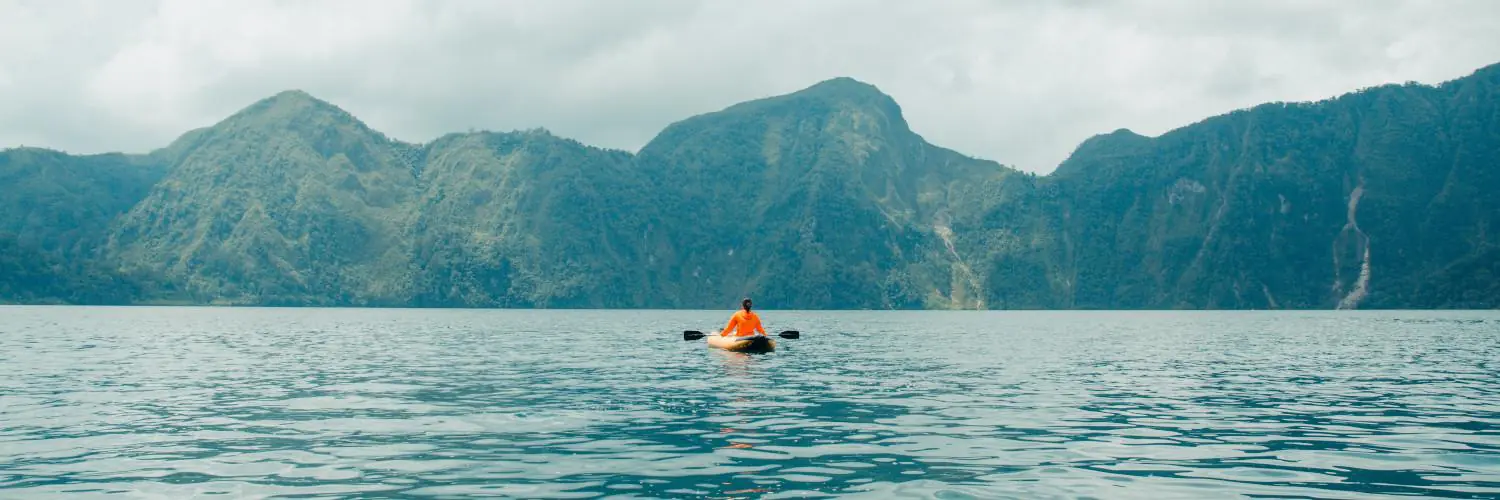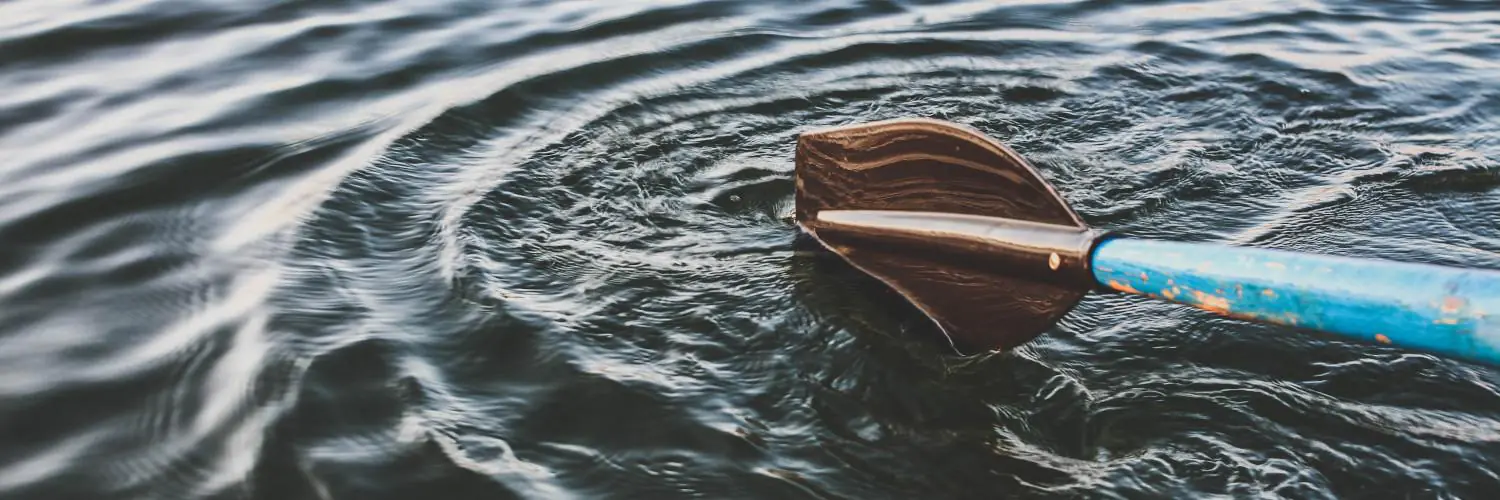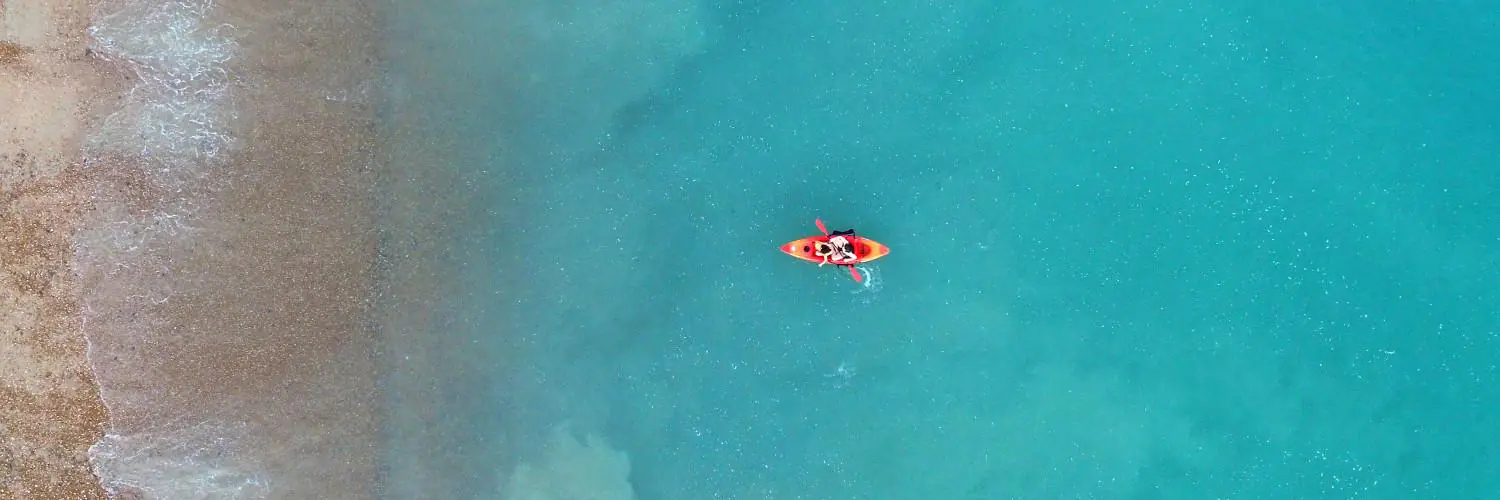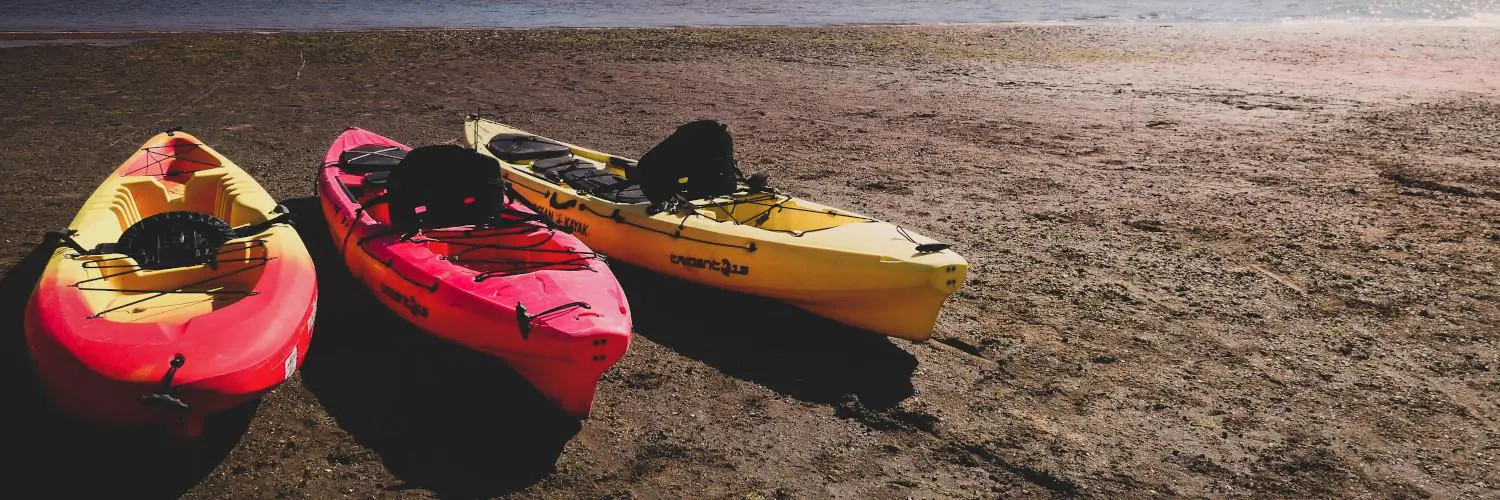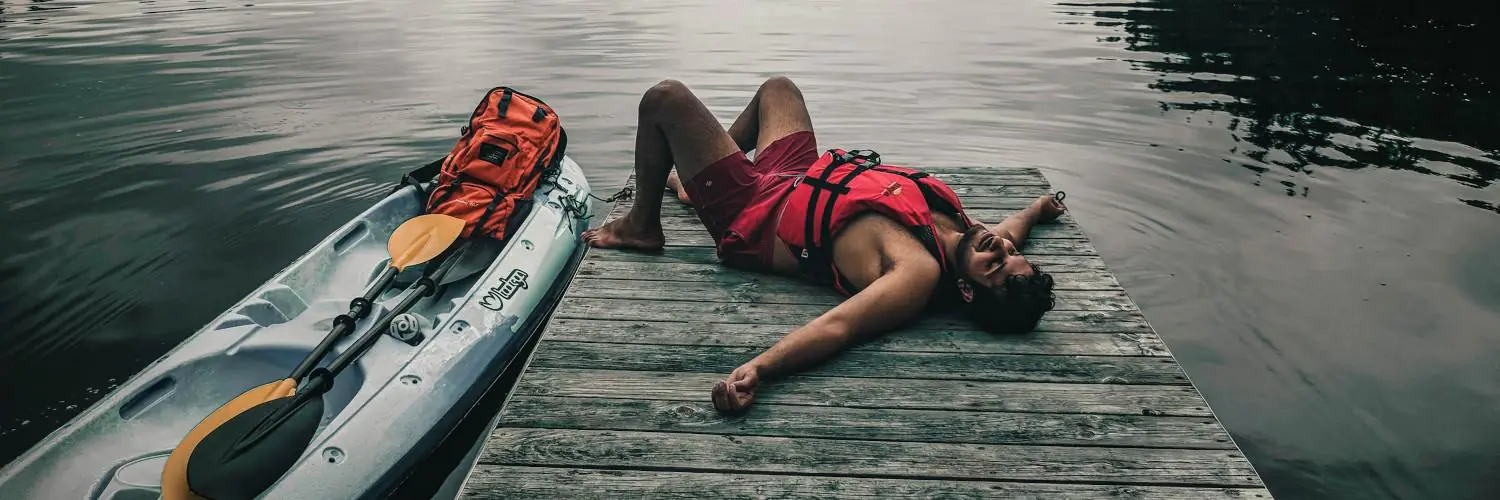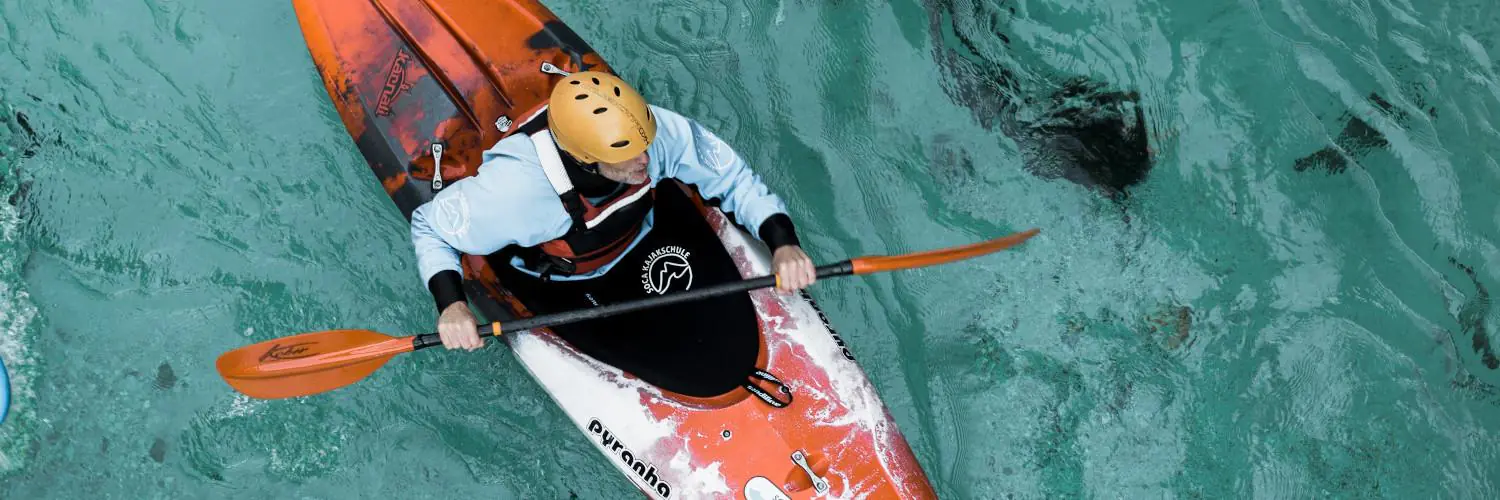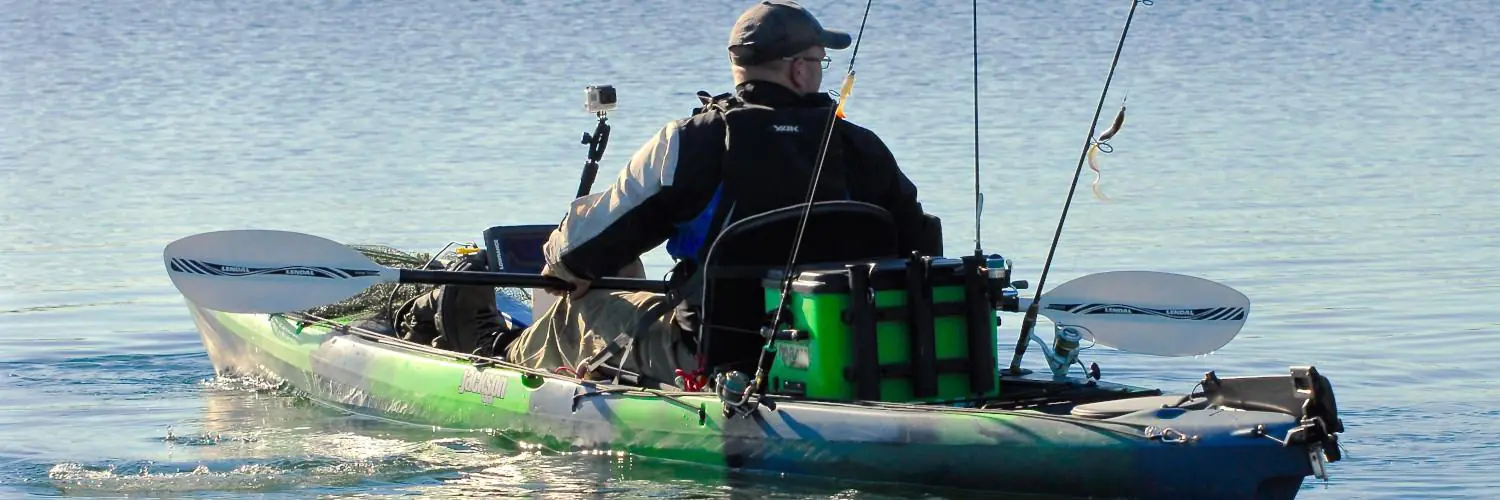In the world of kayaking, particularly among anglers and photographers who need to stabilize their vessels for precision and control, the use of drift socks and anchors is commonplace. Both play crucial roles in managing a kayak’s movement in water but serve different purposes and are suited for varying conditions. Drift socks, also known as drift anchors or sea anchors, primarily reduce the kayak’s drift speed caused by wind and waves, allowing for a controlled, slower movement across the water. This is especially useful in fishing, providing a way to stay in a productive spot without constant paddling.
Conversely, anchors, which are typically heavier and more robust, are designed to secure a kayak in a specific location. They achieve this by lodging firmly into the seabed, offering stability even in stronger currents or winds. Kayak anchors come in various designs, with galvanized iron being a popular material due to its resistance to corrosion and durability. The choice between a drift sock and an anchor will largely depend on the kayaker’s specific requirements, whether it is to maintain a steady position for fishing or to drift slowly along a scenic route for photography.
When selecting a drift control system, kayakers must consider factors like water body size, weather conditions, and their desired level of maneuverability. Drift socks are fitting for larger bodies of water where the objective is to move with the current at a moderated speed, while anchors are better suited for securing a kayak in smaller, more sheltered areas. The integration of kayak anchor systems, which can include an anchor trolley that permits the anchor point’s adjustment, adds to the kayaker’s arsenal for a tailored experience on the water.
Table of Contents
Understanding Kayak Drift Socks and Anchors
In the realm of kayak fishing and navigation, drift socks and anchors serve unique roles in watercraft stabilization and positioning. These tools are integral for kayakers looking to maintain control over their vessel in various water conditions.
Functionality of Drift Socks and Anchors
Drift Socks:
- Function: Drift socks, also known as sea anchors, are deployed to regulate the kayak’s speed and offer directional control in wind or current. They are particularly useful to slow down the drift during fishing, allowing for a more precise angling experience.
- Usage: A drift sock is attached to the kayak and, when thrown into the water, opens up to create drag, which in turn slows the kayak’s movement.
Anchors:
- Function: A kayak anchor is used to hold the kayak in a fixed position, preventing it from drifting with the wind or current. This is especially helpful when a kayaker needs to stay in a particular spot for fishing or observing wildlife without the influence of natural elements.
- Usage: Anchors typically dig into the bottom surface, such as sand or mud, to achieve a steady hold.
Construction and Materials
Drift Socks:
- Material: Commonly made from durable materials such as nylon or ripstop fabric, drift socks need to withstand the constant pull and water pressure. The fabric is usually cone-shaped to optimize drag creation effectively.
- Design: Most drift socks open to form a large cone that captures water, thereby slowing down the kayak. Their design often includes reinforced stitching to prevent tearing.
Anchors:
- Material: Kayak anchors are typically made from metals or heavy-duty materials. They need to be robust to grip the underwater terrain and sustain the kayak’s weight against currents.
- Design: The structure of a kayak anchor can vary, from foldable designs to grappling hooks, depending on the intended use and the bottom conditions it is made for. These designs ensure that once deployed, the anchor will secure the kayak’s position.
Factors to Consider When Choosing Between Drift Sock and Anchor
When deciding between a drift sock and an anchor for kayak fishing, one must assess various aspects such as kayak characteristics, environment, and fishing strategies to ensure optimal performance and functionality.
Kayak Size and Type
The size and type of the kayak play a crucial role in determining whether a drift sock or anchor is more suitable. Smaller kayaks, typically lightweight and more affected by winds, may find better stability with a drift sock, which provides moderate resistance without the abrupt stop of an anchor. Tandem or larger kayaks may handle either option well, but the added water resistance from a drift sock can offer more controlled drift fishing experiences.
- Drift Sock: Ideal for kayaks that benefit from gradual speed reduction.
- Anchor: Provides firm positioning, more suitable for larger kayaks in calm conditions.
Environmental Conditions
In windy conditions, a drift sock is advantageous for maintaining a steady position relative to the current and wind. It acts as a sea anchor, slowing the kayak’s movement and enabling better control. For fishing in more stable conditions where positioning is key, a traditional anchor may be preferred to maintain a fixed spot.
- Drift Sock: Minimizes the effect of wind and current, offering better control.
- Anchor: Effective in calm conditions for stationary fishing.
Fishing Techniques and Goals
Trolling requires keeping the kayak within a certain strike zone, and a drift sock allows for maintaining a consistent speed and course. In contrast, an anchor is beneficial when fishing requires remaining in a precise location, such as when targeting structures or specific spots.
- Drift Sock: Enhances trolling by providing consistency in strike zone coverage.
- Anchor: Best for precise positioning and stationary fishing tactics.
By considering these factors, anglers can make an informed choice between a drift sock and an anchor, each offering distinct functionality that can enhance kayak fishing techniques and success.
Installation and Use
When it comes to kayaking, having control over your vessel’s position is crucial. The installation and use of both drift socks and anchors require attention to detail to ensure effectiveness and safety.
Anchoring System Components
An anchor trolley system consists of several key components that allow a kayaker to optimize the position and angle of anchoring. These components typically include:
- Pulleys: Usually made of stainless steel or durable plastic, these are mounted at the bow and stern.
- Floating Harness: This runs along the side of the kayak connecting the pulleys.
- Cleats: A secure point on the kayak used to lock the anchoring line in place.
- Trolley Line: A rope or cord that runs through the pulleys forming a loop for easy adjustment.
A good anchor trolley kit might also come with a warranty, ensuring its durability and reliability.
Deploying and Retrieving Techniques
Deploying a drift sock or anchor requires a step-by-step approach:
- For anchors:
- Determine the desired location and deploy the anchor from the bow or stern to minimize boat swing.
- Adjust the trolley to set the anchor line angle and lock the position using the cleat.
- For drift socks:
- Attach the drift sock to the kayak using a harness or bungee cord.
- Deploy it on the windward side to stabilize and slow the kayak’s drift.
Retrieval involves careful winding of the trolley line or retrieval of the sock to prevent any tangling or damage.
Maintenance and Safety Tips
Proper maintenance includes:
- Regular inspection of all components for signs of wear, especially the trolley line and pulleys.
- Rinsing the anchoring system with fresh water after use, particularly if used in saltwater, to prevent corrosion.
- Checking for smooth operation of the release system to ensure quick detachment in emergencies.
Safety tips involves:
- Always securing the kayak when not in use to prevent accidental drifting.
- Ensuring a clear understanding of how to operate the anchor or drift sock in various water conditions.
- Knowing how to utilize the trolling motor, if present, in tandem with the anchor or drift sock for precise positioning.
Comparative Analysis of Drift Socks and Anchors
When comparing drift socks to anchors for kayaking, it’s essential to consider how each performs under different conditions and how user-friendly they are for kayak anglers. Key factors such as ease of deployment, control over kayak movement, and the ability to maintain a position will be examined.
Performance in Various Conditions
Drift Socks:
- Windy Conditions: Drift socks excel in windy conditions. They act as a brake to slow down the kayak’s drift when facing crosswinds or headwinds. They are deployed from either the bow or stern using a harness, allowing anglers to maintain better control.
- Currents: They are not designed to hold a kayak stationary but can modify the speed and direction when moving with or against currents.
Anchors:
- Type: The most common type for kayaks is the grapnel anchor. It’s ideal for various bed types.
- Stability: Anchors are better suited for holding the kayak in one position, making them ideal for fishing spots with less wind and current.
| Feature | Drift Sock | Grapnel Anchor |
|---|---|---|
| Stability in Wind | Moderate | Low |
| Stability in Current | High | Moderate |
| Durability | High | High |
| Ease of Haul | Moderate | High |
| Adjustability | Low | Moderate |
Ease of Use for Kayak Anglers
Drift Socks:
- Setup: They require a simpler setup than anchors, often comprising just the sock and a rope. This makes drift socks more comfortable to deploy and haul in, especially when kayaking alone.
- Guidelines: Kayak anglers should follow specific guidelines regarding the length of the rope and the placement of the sock for optimal performance.
Anchors:
- Technology: Anchors use more traditional technology but can require an angler to have a better understanding of the seafloor and how to properly set the anchor.
- Budget: When considering cost, anchors can be a more budget-friendly option, but it’s important to not compromise on quality. A buyer’s guide can provide valuable information on the best products for the money.
- Video Guides: For those new to using anchors, video tutorials can be very helpful, demonstrating the correct way to deploy and secure them.
Both drift socks and anchors offer valuable functions for the kayak angler but are utilized best under different circumstances. It’s not just about having the right equipment but knowing how to use it effectively based on the water conditions encountered.
Choosing the Right Equipment for Your Kayaking Experience
Selecting the appropriate gear for kayaking is critical, especially when considering drift socks and anchors. Both serve to control your kayak’s movement in water, but they are used under different circumstances and have unique advantages.
Assessing Your Kayaking Needs
When determining what equipment to utilize for kayaking, one must first identify their specific needs. A drift sock, also known as a drift bag, drogue, or sea anchor drogue, is typically utilized for fishing kayaks to manage speed and course while drifting. This parachute-like canvas device slows the kayak down, providing stability and control in windy conditions. However, it is not intended for completely halting movement but rather for creating consistent drag. On the other hand, an anchor, such as a mushroom anchor, grapnel anchor, or drag chain, is designed to secure the kayak in a fixed position, typically by latching onto the rocky bottom or embedding into the sediment.
For larger boats or challenging conditions, specialized items like the Power-Pole Micro or Lindy Drift Control Drift Sock may be optimal for greater control.
Investment and Product Selection
Once needs are established, selecting the right product involves considering several factors:
- Durability:
- Canvas material for drift socks should be inspected for tear resistance and UV protection.
- Size and Compatibility:
- Larger crafts may require larger drogues or a more robust anchor setup.
- Compatibility with trolleys and anchor rope length must be considered.
- Ease of Use:
- Options with a collapsing cord facilitate easy retrieval of the drogue.
- Anchors should be foldable and easy to stow when paddling.
- Type of Water:
- Calm water may only necessitate a simple anchor system.
- For rough waters, a stronger anchor or a specialized drift sock like drift chute might be needed.
An informed purchase decision must balance practicality with cost, so carefully reviewing a guide or product reviews before committing to a particular drift sock or anchor is advisable.

